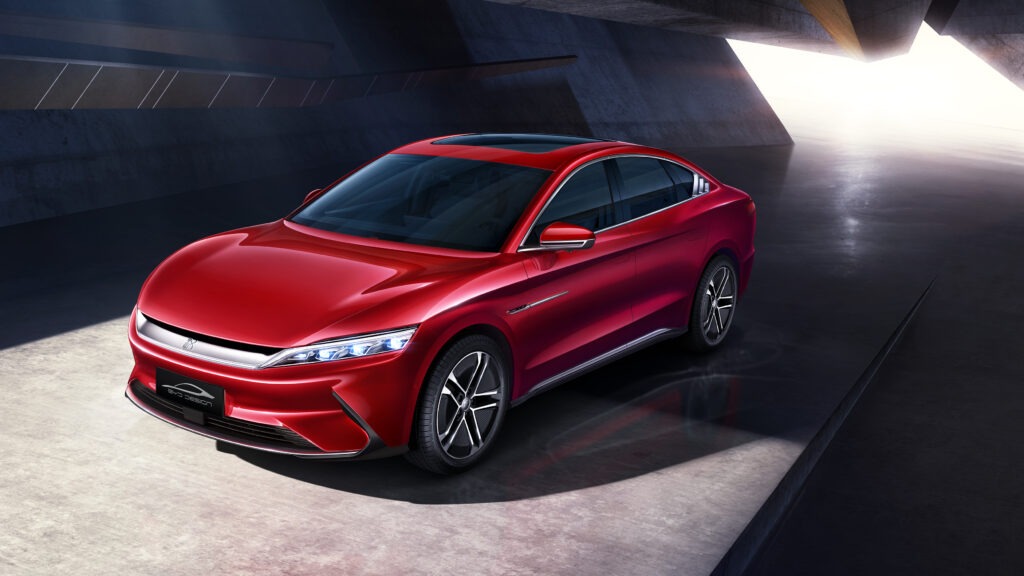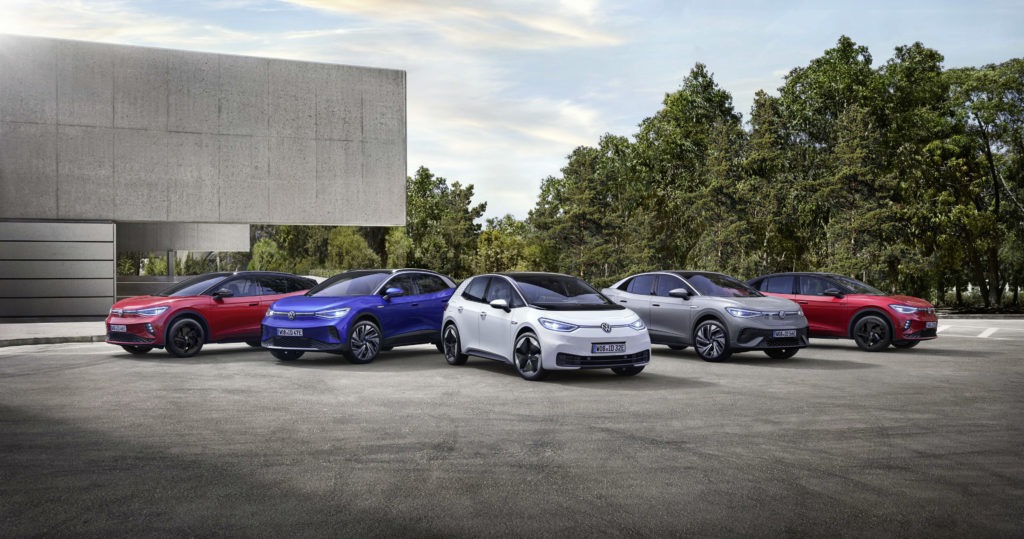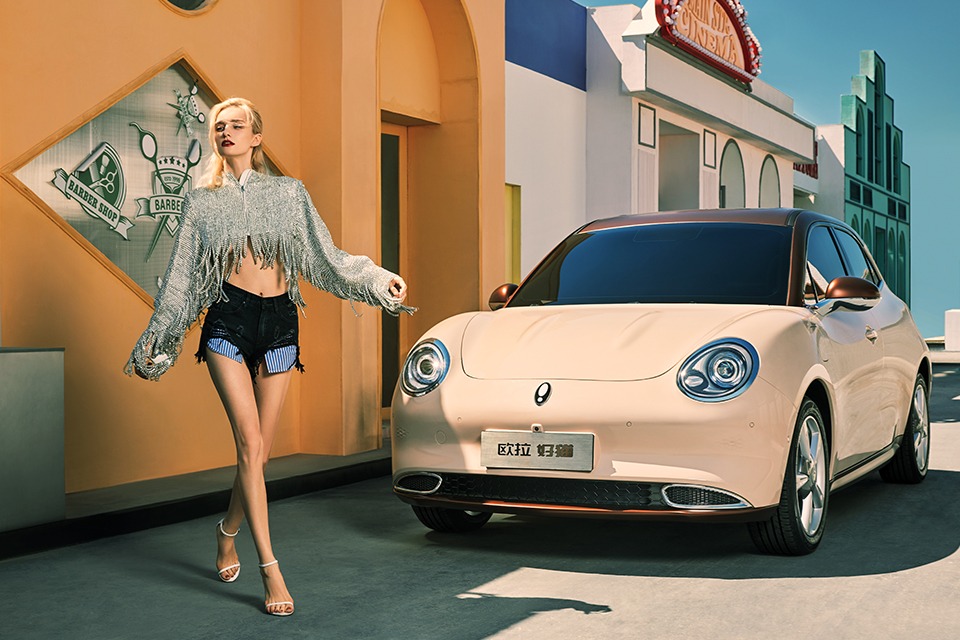BYD’s irresistible rise to the top of the automotive world
22 December 2022

Electrification has meant disruption for the automotive industry. Newcomers are transforming from the hunted into hunters. José Pontes, data director at EV-volumes.com, examines the rise of BYD.
The story behind the Shenzhen-based carmaker is an interesting one. Starting out as a battery firm that bought the car company Build Your Dreams (BYD), it was an early pioneer with a clear vision for the future. Essentially, electric vehicles (EVs) are the way to go.
The early days
Founded as a battery manufacturer in 1995, the company had 20 employees at its inception. Profiting from the rapid growth of the mobile-phone market, BYD became the largest battery manufacturer in China and the fourth largest in the world within a decade.
This growth was helped by the company’s expansion into mobile-phone components and the 2002 acquisition of a small Tsinchuan automotive company, which made Suzuki-like city cars. This company was then renamed BYD Automobile.
Pioneering EVs in China
Together with JAC and Chery, BYD was an EV pioneer in China. Launching the BYD F3 DM in late 2008, this plug-in-hybrid (PHEV) compact sedan would still present some respectable specifications if launched today.
This is thanks to roof-mounted solar panels and a 16kWh lithium-iron phosphate (LFP) battery, allowing some 50km of electric range. The one-litre petrol engine could function as a range extender by directly connecting with the wheels, or working alongside the two electric motors to deliver a total of 125kW (168hp).
The following year, the e6 all-electric model was launched. With a compact MPV body, it was meant to appeal to fleets, having started life with a 61kWh LFP battery. A few years later, it was upgraded with an 81kWh battery.
But the execution of BYD’s models was lacklustre. The designs were uninspiring, and the specifications did not provide a competitive edge. The vehicles failed to stand out, unlike others, namely Tesla.
The ‘new’ BYD
All this changed when BYD hired Wolfgang Egger as its design director in 2017. As the creator of masterpieces such as the Alfa Romeo 8C Competizione and the Alfa Romeo 156, big things were expected. Three years later, in 2020, the first result of Egger’s efforts went into production, namely the BYD Han EV. This new flagship model changed everything.
Taking a page from Tesla, the Han was effectively BYD’s second coming. Featuring standout battery technology, the attractive sedan allowed the carmaker to create a halo effect over the rest of its models. This was all while improving margins, thanks to the Han’s higher price compared with the rest of the line-up.
After introducing the Han in 2020, other inspired models followed, with 2021 becoming a pivotal year. BYD has been a story of irresistible growth, and it will pick its fourth manufacturer title this year. Since 2015, all global manufacturer EV titles have been split between BYD and Tesla.
BYD’s European barriers
BYD faces several challenges to establishing itself as a significant EV manufacturer in Europe. The first is limited name recognition as BYD is basically a non-entity in the region. While people that follow the EV industry more closely have already heard of it, the average buyer is still somewhat in the dark.
Despite having deployed a sizeable fleet of electric buses in Europe, the mainstream buyer has most likely never seen a BYD vehicle in the flesh. This is linked to a lack of customer base and dealer-service availability.
Unlike in China, where BYD can rely on an established dealer network and customer base, the company will start from scratch in Europe. On top of absent brand recognition, the carmaker will have to work harder to make itself known and win the trust of the public.
Charging challenge
As with other electric brands, success depends on the quality of the local charging infrastructure (CI). Battery-electric vehicles (BEVs) are not attractive without dense and reliable CI.
Drivers should be able to plug in while on the road, avoiding charging anxiety, which can be as damaging for EV adoption as range anxiety. Without CI, the EV driver will need to have contingency plans in case the initial charging station is offline, busy, or broken.
CI differs greatly from country to country. For example, in the Netherlands, the density and availability of charging-point operators (CPO) mean drivers can travel without major concerns. CI is sparse in most other countries, limiting BEV success.
This is something that Tesla keeps in mind when landing in any given country, deploying its supercharger network simultaneously with the start of official sales.
Electrification opportunities
Several opportunities could help BYD become a significant player in Europe. These positives stand to make the carmaker competitive as buyers across the continent shift focus to electrification.
Due to the aerodynamic skateboard platforms and batteries, BEVs tend to look similar, making them harder to distinguish from the crowd. With an identifiable exterior design, BYD focuses on an attractive interior, disregarding the minimalism of other companies. This pursuit of more original ideas allows the brand to stand out from its competition.
One of the reasons BYD has flexible and easily ramped-up production is its vertical integration. With all batteries made in-house, and a chip division within the BYD Group, the company is not as affected by supply shortages as most of its competitors. Without third-party supplier dependency, BYD can be leaner than its competitors, allowing it to respond to market trends faster.
Price and specifications
One of BYD’s key selling points in China is its competitive price versus specification ratio. While prices in Europe are not as low as they could have been, they are still well-placed in the market.
For example, the BYD Atto 3 is among the cheapest vehicles on offer. But despite that, it does not lose out on specifications, even winning the 0-100kph metric. The model’s LFP battery is an extra advantage, providing higher resistance to degradation than its competitors’ batteries built with nickel, manganese, and cobalt.
Complete model line-up
One of the most impressive characteristics of Chinese EV makers, is their prolific model launch calendars, with long line-ups and short life cycles.
BYD is the case in point. The brand currently offers just three models in Europe, the flagship Han EV sedan, the midsize Tang EV SUV and the compact crossover Atto 3, also known in China as the Yuan Plus. But in 2023, the company expects to roll out the Seal midsize sedan and the small Dolphin soon after.
If BYD gains traction in Europe, other models can be expected to land from 2024 onwards, such as the upcoming Seagull city EV. This model is expected to land in China in the first half of 2023. Then there is the highly anticipated BYD Sea Lion, the company’s take on the Tesla Model Y, which is expected to be unveiled sometime in 2023.
This could allow BYD to have a full passenger-car line-up in Europe by 2024, which will be the final piece of the European puzzle. The company is already present with electric buses, vans and heavy-duty trucks.
Surfing the wave
Chinese brands are responsible for over half of EVs registered globally in 2022. With the exception of MG, now belonging to SAIC, 2023 will be the first year Chinese manufacturers export to Europe in significant volumes. Last year, MG racked up 52,546 units in Europe, serving as a guideline for the future.
Now, BYD looks to be one of the first to surf the 2023 wave. The carmaker has a promising line-up in a rapidly increasing market, which could appeal to a public that has not yet been drawn to any particular EV brand or cannot find a satisfying electric model from established manufacturers. With the right prices and/or finance deals, BYD models could prove to be quite popular on the continent.



